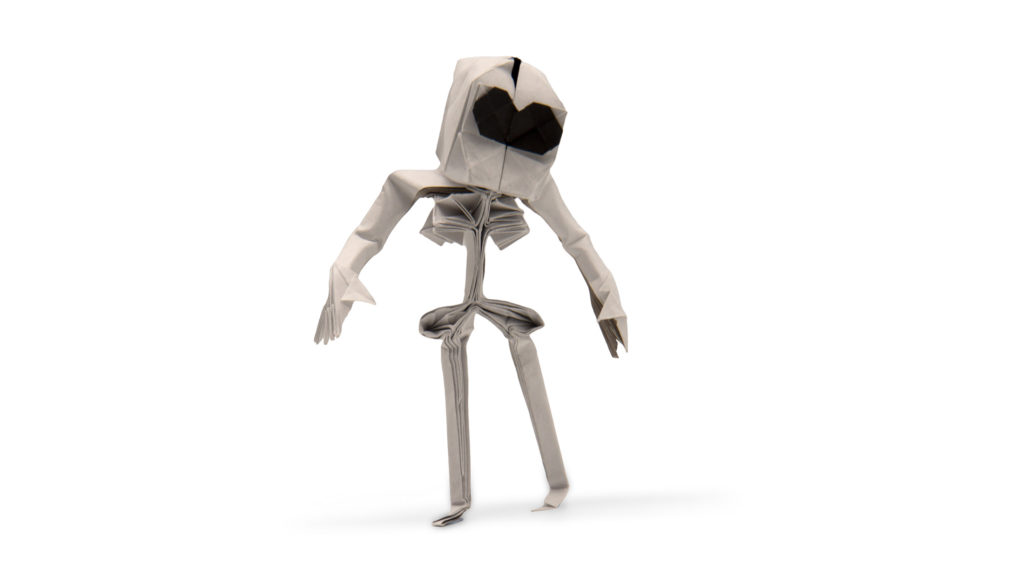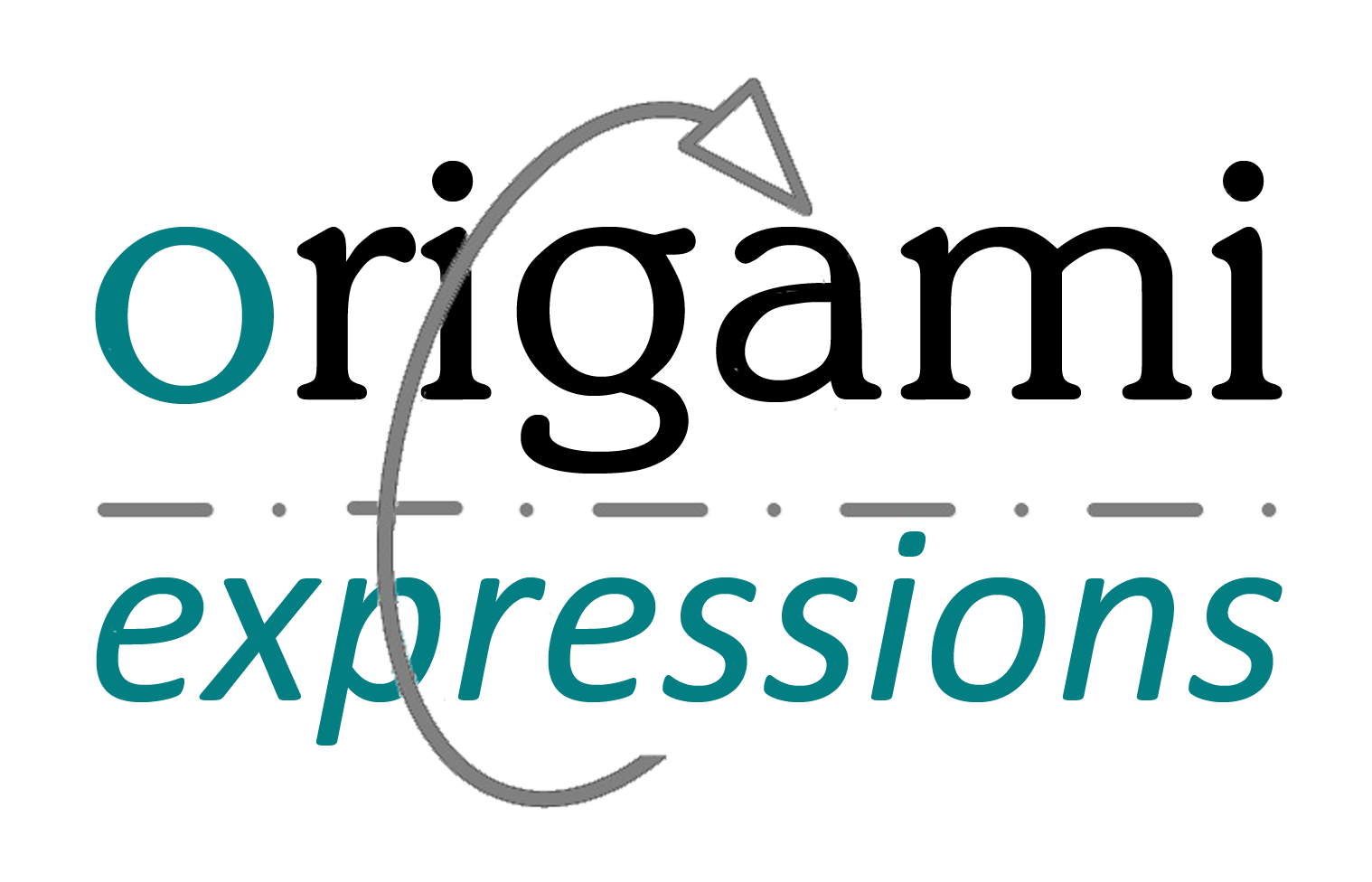
“There is something about a closet that makes a skeleton terribly restless.”
-Wilson Mizner, American Playwright
Calendars are fairly predictable things. They usually have the same number of days in them (although we get an extra one thrown in every four years just to make sure we’re paying attention), the same number of weeks, and the same number of months. It makes it simple to keep track on important dates like birthdays and Christmas – or at least it should do. All too often these occasions come along and completely take us by surprise. A bit like Halloween this year.
I try to fold something appropriately seasonal at times throughout the year, or to mark specific dates. Halloween usually happens on 31 October, but with the end of the month rapidly approaching, did I have something ready this time? No, and I wasn’t feeling very inspired either.
Thankfully, Nick Holmes, who run the Instagram account Origaminick posted this skeleton a few days ago and I remembered I had the instructions for it kicking about somewhere and I’d never got around to it. Thanks Nick!
Note: This post contains affiliate links. Please see disclosure below for more information.
About the Origami Skeleton
Normally I wouldn’t fold something like this. It’s made from three different sheets of paper and the head is glued on. I’ll forgive this design though. What can I say – it’s cute! It’s not what you’d call anatomically correct, but that’s not the point.
This skeleton, or Gaikotsu in Japanese, was created by Hojyo Takashi. It is the base skeleton design for a range of similar models that Hojyo has expanded into a fictional world called Gaikotsu Planet. There is more information on these designs, each with their own backstory on the Gaikotsu Planet section of Hojyo Takashi’s website. It’s worth taking the time to explore the site and see some of the variations.
Folding the Origami Skeketon
This is an intermediate level design using three sheets of paper: one for the head, one for the arms and shoulders, and one for the legs and body. The head is pretty simple to make – it’s a modified traditional waterbomb. The arms and legs are both box-pleated designs, so that means lots of reverse folds and sink folds. If you’re familiar with box pleating you shouldn’t find anything overly complicated in these instructions.
The instructions recommend a sheet of paper that is 10cm x 10cm for the head and 15cm x 15cm (6in square) paper for the both the arms and the legs. This will create a skeleton that stands about 11.5cm (4.5in) tall, with a shoulder width of 4.5cm (just under 2in).
I made the one in the picture out of ordinary origami paper and it came out well. There are quite a lot of layers in this model, so you don’t want anything too thick. At the same time, I wouldn’t want a really thin paper as it will just rip. Obviously you need paper that is a different colour on each side for the head so that the eyes show up properly.
You can use the same paper for the rest of the model as well, as the reverse of the paper doesn’t really show up on the final model – only on the inside of the hands and you can get away with that. Having said that, I chose to use paper that was light grey on one side for the arms as I thought this wouldn’t be a obvious as black. It took me about an hour and a half to fold this the first time. There are 159 steps spread across the three parts of the model.
If you don’t feel like folding a whole skeleton, you could try this origami skull or these origami skeleton hands.
Diagrams for the Origami Skeletion
The diagrams are available in the Origami Tanteidan magazine issue 140. According to the Gaikotsu Planet website, the designer is planning to add diagrams for all the Gaikotsu characters to the site over time, but this site doesn’t seem to have been maintained for a while, so I’m not sure if this is going to happen.
About Origami Tanteidan Magazine
Tanteidan magazine is published by the Japan Origami Academic Society (JOAS) six times a year. It includes a range of articles, diagrams and crease patterns, mostly in Japanese but some content is printed in English as well. Even though the instructions are in Japanese, diagrams are universal so they are accessible anyway.
You can buy back issues of the magazine from the JOAS website, but you have to buy a whole ‘volume’ – that year’s complete set of six. You can also subscribe to the magazine on the same link.
JOAS also hold origami conventions every year and publish the Tanteidan Convention Packs to accompany them. Don’t confuse these with the magazines! The best way to get hold of these is via the Origami Shop.
Whether you subscribe to the magazine, or pick up a Tanteidan Convention Pack, make sure you flick through them on occasion. That way you might have something to fold next time the calendar takes you by surprise.
More Halloween Origami
Check out these simple Halloween origami models. If you are looking for more Halloween-themed origami to fold, also consider these options:
Get Involved
I’d love to hear your views on the this origami skeleton. What are your favorite Halloween origami designs? Feel free to let me know what you think in the comments below, or you find can me on Instagram or Twitter. Check out my Pinterest boards too!
Sign up for my origami newsletter here and get our free Origami eBook.
Disclosure:
This page contains affiliate links and I may receive some small commission for purchases made through the links on this page. This hasn’t affected my decision to recommend a product – I value my personal and professional reputation and would not endorse a product or supplier I did not believe in. There is no additional cost to you for purchasing through this page.
As an Amazon Associate, I earn from qualifying purchases. Origami Expressions is a participant in the Amazon Services LLC Associates Program, an affiliate advertising program designed to provide a means for sites to earn advertising fees by advertising and linking to amazon.com, amazon.co.uk, amazon.ca. Amazon and the Amazon logo are trademarks of Amazon.com, Inc. or its affiliates.
